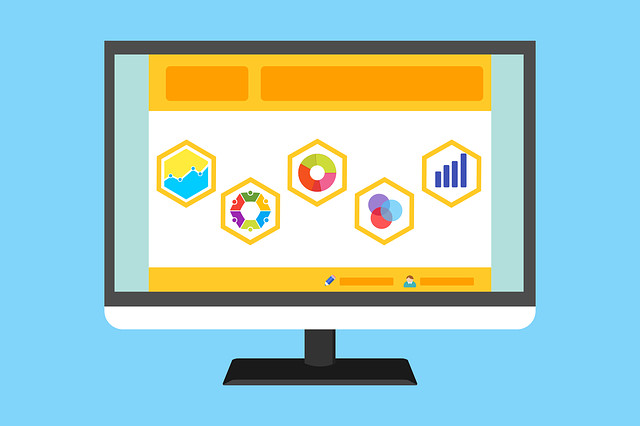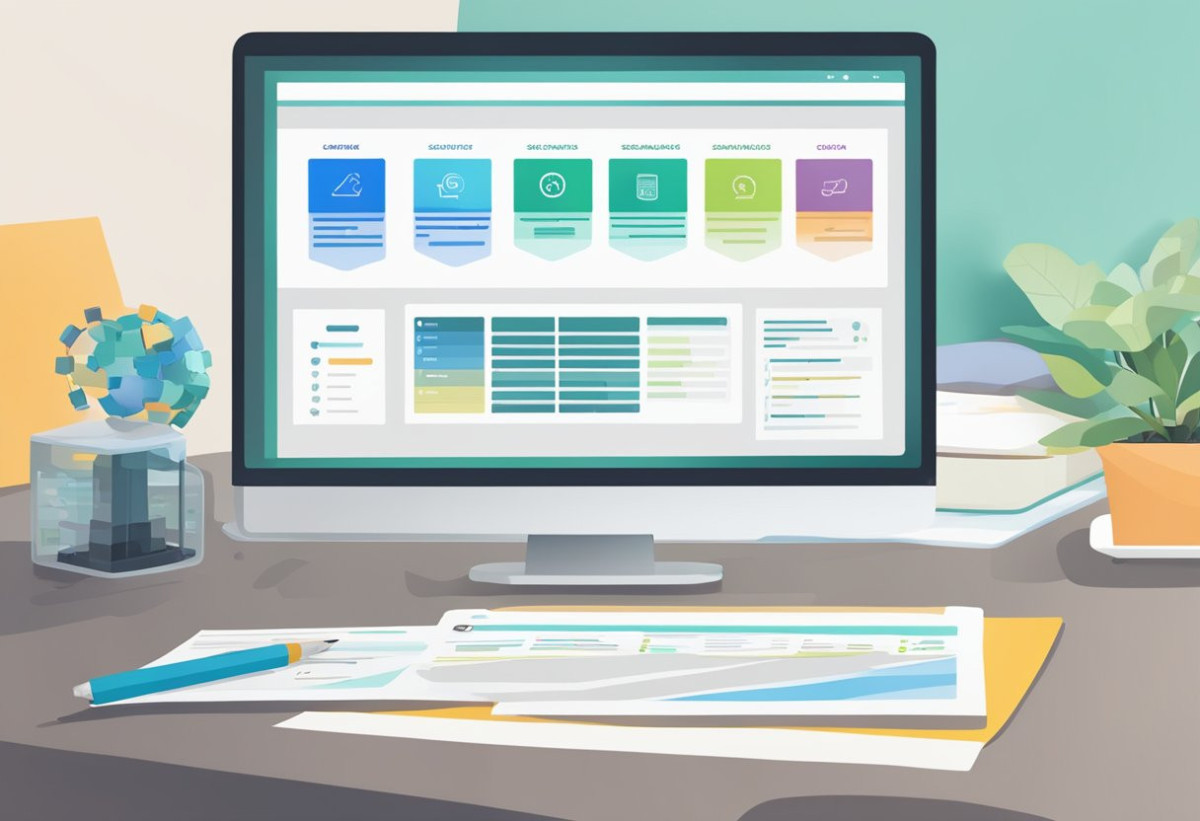- Research platform
Sources of information
Data analysis
Actions
- Solutions
For whom
Problems / Issues
- Materials
Materials
- About us
About us
In the digital age, the possibilities for gathering information about customer preferences and expectations through online research are endless. You can find comprehensive research solutions that adapt to the needs of any business, regardless of industry or size. Whether it's customer satisfaction surveys, purchase path analysis or testing new features in a mobile app, tools such as YourCX enable a wide range of online research.

Using intuitive interfaces and advanced data analysis, YourCX offers the ability to not only collect, but also deeply understand customer feedback. With distribution options through the website, mobile apps, email and SMS, as well as using QR codes, surveys can reach a wide audience. In addition, integration of collected results with in-house analytics and customer platform data enables precise conclusions to be drawn

Your company can benefit from a variety of CAWI research and survey scenarios, which should be designed to fit specific business needs. Here's a brief overview of the most popular areas to cover in survey research:
Marketing research allows you to analyze the effectiveness of advertising campaigns and brand communication strategies. These methods range from online questionnaires to detailed behavioral analysis of users. Marketing issues can be included in permanent general surveys as well as those launched ad-hoc. Examples of marketing issues include information on how the respondent learned about the brand, how often he/she purchases, visitor demographics. In addition, data automatically collected in the background, such as sources of visits or technical data, are useful.
Using sales enablement research you have the possibility to better understand the factors influencing customers' purchase decisions. In addition, mechanisms such as online user behavior monitoring help you determine which elements of your store or website are most effective in conversion, or which discourage purchases. Automatically combining research with proprietary analytics allows you to immediately determine the impact of claimed factors on sales and any other micro-conversions.
UX research focuses on the user experience with the interface of a mobile application or website. Analyzing the user's use of specific features and interactions with the interface helps optimize the usability of digital products. Supporting questions here relate to the ease of use of the process, time consumption, evaluation of graphic elements or comments on functionality. Advanced survey targeting mechanisms are also useful here, allowing to reach selected groups of users who have interacted with a given mechanism or have previously performed relevant actions. Also well suited here are clickmap surveys, in which users are asked to indicate on a mock-up image the element which, in their opinion, performs a specific function.
Understanding audience preferences is key to the success of a new product or service. Market preference research provides knowledge about what customers find attractive and desirable in the products or services offered. Also, they provide information about where as well as how to make purchases, reasons for preferring particular companies, shopping channels. Remember that customers visiting your services are a mine of knowledge at your fingertips.
Measuring customer satisfaction is invaluable for the growth of any business. They help determine the level of satisfaction with purchases, service or overall impression of brand interaction, which is fundamental to maintaining long-term customer relationships. Satisfaction surveys should not be cross-checked and should be used after the process or interaction to which they relate has been completed. For example, a satisfaction survey should be sent after a service has been performed, after a purchase has been made or after a conversation with a consultant has been completed. It's a good idea to use standardized evaluation questions in satisfaction surveys, such as NPS, CSAT, CES, so that the results can be benchmarked later.

The possibilities for conducting a wide range of online surveys allow you to gain valuable information about your company's performance. Below you will find specifically discussed examples of how these tools can be used to optimize your online presence and improve customer experience and individual services.
General site research can help you identify the elements that most attract users' attention. It also allows you to pay attention to the needs of site optimization, navigation or readability. It allows you to find out what users are looking for, what is the purpose of their visit today. Combined with automatically collected data on the frequency of visits as well as the types of visit sources, it is known what correlations exist between these factors and customer expectations.
With a mobile app survey, you will gain information about the app functionalities that are most useful to users and those that may need improvement. You will find out how they rate specific processes, whether they had problems with them and how to improve them. You will examine the effectiveness of each element in the application, and thus improve user satisfaction with the application.
Customer Journey research allows you to understand the paths your customers take in interacting with your brand depending on their goal. Web analytics shows the paths, but does not know the customer expectations behind them. A multi-step Customer Journey study will allow you to understand the paths of the journey, the problems encountered along the way, and determine the degrees to which goals are met.
Analyzing the causes of purchase abandonment is a way to discover what keeps customers from completing a transaction and allows you to make changes to minimize this phenomenon. Thanks to such studies, you can find out the causes of purchase abandonment, some of which can certainly be quickly eliminated, as well as the real impact of each cause individually on conversion.
By studying the reasons for abandonment, you can identify at what point and why users abandon the site, whether they encounter errors, or perhaps respondents do not find the offer attractive. You'll also find out if they have already completed their goal, and what is the real impact of the reasons for leaving the site on repeat returns.
Conducting a post-order survey provides feedback immediately after a customer makes a purchase, allowing you to react quickly to any problems or errors, but also to find out if the purchase process went smoothly, and what and to what extent drove the respondent to complete the transaction. Also, you will learn if there is something worth changing in the purchasing process to further improve the customer experience.
A delivery survey is helpful for analyzing and optimizing the process of delivering products or services to the customer. The purpose of this type of study is to ensure high quality and efficient delivery, which has a direct impact on customer satisfaction and operational efficiency of the company. Often companies use courier companies, and with this survey they can control their work by having specific information from buyers. By combining the survey with CRM data, it is even possible to react instantly to emerging problems with full consideration of business-relevant segmentation.
Stationarypoints, due to their characteristics, are not easy to cover with surveys. However, using a few selected methods, such as Click&Collect surveys, loyalty programs, QR codes and Google maps feedback, it is possible to build a valuable tool aggregating information from multiple sources and identifying areas for improvement or strengths with full consideration of organizational structures. Supplementing this data with real-time competitor information obtained results in a solid basis for analysis and knowledge distribution to hundreds or thousands of people interested in their own slices of knowledge in specific company departments.
A Customer Service Survey involves analyzing and evaluating the quality of customer service. The purpose of such a survey is to understand whether customer service according to customers is helpful, friendly, fast and whether it fulfills its function, i.e. whether it actually helps customers. Customer service works across multiple channels, so it makes sense to approach the topic comprehensively and study customer service in each channel - email, phone calls, as well as livechat communication.
When you have a specific task or research objective, an ad -hoc survey allows you to quickly and flexibly gather information with a specific request or need, e.g. researching a new functionality, researching a new version of a website or a new product or service. Also dedicated UX research, research on a specific product group or on brand flows. Internal customer research is a mine of knowledge.
There are a variety of technical opportunities to enrich online research with valuable insights.
Integration with web analytics: You can integrate research with tools such as Google Analytics, or Microsoft Clarity to gain in-depth insights into user behavior on the site. Also, by using a survey platform that has its own analytics, you have full access to user behavior and the impact of the experience on the business right out of the box.
Survey personalization: Customize the survey to match your brand's visual identity. Make the survey not only functional, but also aesthetically consistent with your website. Also match the survey itself to the respondent's profile. If you know what they've done before, who they are, optimize it based on that knowledge to make the survey more tailored to the respondent. Also, make sure to properly thank the respondent for completing the survey. You might also be tempted to use dynamic discount codes.
Two-step survey: learn about the goals (the first part of the survey) and any problems in achieving the goal (the second part of the survey). Also used to give customers tasks to complete, and then evaluate problems with task completion. This is an ideal survey for analyzing customer needs, paths to fulfillment of needs and issues that arise along the way.
Automatic analysis of open-ended responses: automatic categorization, sentiment and emotion analysis as well as potentially voice statements. An approach that is already transforming the way companies collect and interpret data. It allows companies to analyze large amounts of unstructured data quickly and efficiently.
Advanced survey targeting: Reach those who are a perfect match for the survey's target with your research. Targeting should include types of visit sources, pages visited, actions performed, customer parameters set in the survey, or even actions performed weeks earlier. Advanced targeting improves the quality of the results and improves the conversion of the survey.
Feedback loop: Manage the voice of the customer. Customers who have engaged in sharing feedback, especially information about problems, are eager to know that they are being listened to and that their comments are being implemented. Feedback loop is also an opportunity to deepen the relationship with the customer, thus potentially converting them from a critic to a fan of the brand.
All of these options allow you to create surveys that are fully customized to your needs and the specifics of your target audience, which in turn translates into better quality data capture and more effective marketing efforts.

When you conduct online surveys, the ability to integrate the collected knowledge with the customer data you already have is crucial. This integration allows you to understand your customers more fully, so you can make better-informed decisions.
How do you integrate online survey data?
Identify points of contact: Identify where online survey data can uniquely connect with other data from your company.
Collect data: Make sure you have access to data from different channels - such as web analytics or data from CRM systems. Then bring them together.
Choose tools: Use tools that are compatible with your data ecosystem, such as the YourCX platform, which allows you to integrate research data from different sources.
Make the integration: Two-way integrations work best - from the research platform to your analytics solution as well as from your CRMs to the research platform. This approach will leverage the capabilities of both solutions
Get to analytics: Take advantage of advanced analytics tools to combine different data sets and get in-depth insights.
An example of such integration might be combining customer satisfaction survey results with sales data, so you can see the direct impact of customer feedback on sales performance.
Remember, by following these tips, you can improve not only the quality of the data you collect, but also effectively manage and use the information you collect for business growth.

YourCX offers flexible and comprehensive options for conducting online research to gain valuable insights into the customer experience. Your company can benefit from a variety of research tools and methodologies tailored to its specific needs and goals:
Online research scenarios: Online research options include many of the scenarios most commonly found in the online channel - service research, research into reasons for purchase abandonment, reasons for abandonment, process research, livechat contact or many others.
Continuous and event-based surveys: your surveys can be continued over a long period of time or triggered by specific events, such as after a delivery process. It all depends on the goal that is set for the research.
Standalone analytics: Information about what sub-pages the respondent visited before filling out, what pages he visited after filling out, what he did on the site are automatically integrated with the survey. It is known how often he/she buys, performs business-relevant activities, and this allows for the exact impact of the statement on the business (CX ROI).
Integration with other platforms: YourCX allows you to integrate your survey results with data from other platforms for in-depth analysis. Integration with CRMs or analytics tools is a regular part of the collaboration
Advanced additional mechanisms:
Integration with external data sources such as Google map reviews, Google Spreadsheets
Feedback loop and performance-based task management mechanisms
Extensive and fully customizable dashboards that integrate results from any number of sources
Ability to automatically create hundreds of reports and dashboards for extended organizational structures, such as data recipients at fixed locations
Alerts that are distributed via email to interested employees or entire departments, which provide real-time notification of a predefined event - whether a low rating is given, an error is reported or a downward/upward trend in a category of interest.
Single Sign On - employees can log in through your standard authorization mechanisms
Mechanisms for mass processing of statements: automatic categorizations, manual categorizations, learning automations based on manual categorizations
Heatmap testing to accelerate prototyping of UX solutions
Variety of distribution channels:
Website
Mobile application
SMS
QR codes
Your business can benefit from real-time reporting at any time, so you can track customer feedback and reactions in real time. The platform provides tools for filtering, segmentation and data analysis, which are key to effective customer management and optimizing the online experience. Extensive data visualization mechanisms are available out of the box. Also, the preparation and use of hundreds of dashboards or reports is a daily occurrence. Also, if you had custom needs, the platform's lightning-fast development and expansion will ensure their quick service, as evidenced by our references.
Finding effective solutions for online research is key to understanding your customers' preferences and behaviors. Below you will find answers to the most frequently asked questions about implementing and analyzing online surveys using the YourCX platform.
Conducting online research, or CAWI surveys, allows you to communicate with your customers quickly and extensively, reduce costs, and easily analyze the collected data. It is a flexible tool, allowing you to tailor the methodology to the specifics of your target audience.
Effective data collection methods for online research include online surveys available on a website or mobile app, and communication via email and SMS. Using QR codes to quickly access surveys is less effective, but can sometimes be very useful.
In order to ensure that survey results are reliable, it is necessary to focus on proper sampling, targeting the survey by reaching the right audience. You also need to optimize the survey visually and logically to improve its conversion.
Any tool that meets the needs of the analyst can be used. It can be Excel, PowerBI or others. However, it's best if the survey platform itself already has mechanisms in place to analyze the data and automate that analysis, so that you can focus immediately on the conclusions and not on the tedious data analysis itself.
Engaging respondents requires interesting survey content, a clearly communicated survey objective, and incentives that can be a form of discount or contest. It is also important to keep surveys short and user-friendly.
Protecting personal information should be a priority in any online survey. Use methodologies and analytical tools that comply with current data protection regulations, such as RODO or GDPR, and inform participants about the purpose of data collection and how the data will be processed.
Copyright © 2023. YourCX. All rights reserved — Design by Proformat